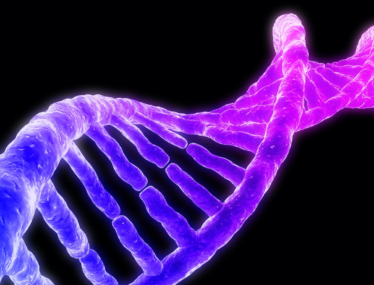CRISPR-Cas9 – A chink in the armour of the white knight?
By Dr Rebecca Howard

Anyone even remotely linked to the field of Molecular Biology will have noticed the escalation in use of the CRISPR-Cas9 gene editing tool over the past five years. First used for genome editing by teams at both Harvard and MIT and published in 2013, CRISPR is now featured in thousands of publications every year, a number that is increasing rapidly.
The field is moving so quickly that this blog will probably be out-of-date by the time it is published.
Clustered Regularly Interspaced Short Palindromic Repeat (CRISPR for short) has become the pre-eminent means of genome editing in 2017. Concisely put, the CRISPR-Cas9 system is a method of performing targeted gene cleavage and gene editing in eukaryotic cells, making it an ideal candidate for use in gene therapy, be it for the repair of harmful mutations or the silencing of viral transcription. There are two components to the CRISPR-Cas9 system. Firstly a “guide RNA” targets the sequence of interest within the genome. The guide contains sequence complementary to that of the DNA sequence of interest, but containing the required sequence mutation. The RNA also comprises a pre-designed sequence of approximately 20 bases designed to guide the second component, the Cas9 enzyme, to the right part of the genome. Cas9 causes a double-stranded break in the target DNA, thus activating the cell’s DNA repair machinery to act and repair the broken strand. The system has been likened to use of the “find and replace” function commonly used in many computer software packages. CRISPR-Cas9 is widely considered to be the cheapest, fastest and most reliable means of “editing” genes.
While it is currently illegal in the UK to “edit” human germline cells to produce changes that may be inherited by future generations, an international team of researchers has recently published data demonstrating the repair in human embryos of a gene defect responsible for the thickening of heart muscle [1]. These embryos were not implanted, but this is a clear affirmation of the potential capabilities of the CRSPR-Cas9 technique.
The first human trial of CRISPR-Cas9 took place in China in October 2016 and attempted to induce an immune response in a lung cancer patient [2]. The team first removed immune cells from the patient’s blood and used CRISPR-Cas9 to inactivate the PD-1 gene, which is involved in the downregulation of the immune system to prevent autoimmunity. The team reported that the trial began well, but no further updates have been published. Other pre-clinical studies are also underway, e.g. for delivery of a functional copy of the dystrophin gene to a muscular dystrophy mouse model [3] or to reactivate a silenced tumour suppressor [4] (the latter, commonly known as a “gatekeeper”, is able to slow or prevent tumour development). Swiss-based CRISPR therapeutics are currently engaged in collaborations with major pharmaceutical companies including Vertex, with whom they intend to submit their first application for clinical trials in late 2017. Initial targets for these therapies include both β-thalassemia and sickle cell disease [5].
The technique also has broader implications, with reports demonstrating a step towards its use in live cells for data storage. It has recently been reported that scientists have been able to incorporate a short film sequence into a living cell and re-play this using DNA sequencing [6]. While this is an incredible feat of science, it will be a long time, if ever, before there is a practical application for such a system. If reliable, there may be potential to utilise this as a fully editable data storage system in a far smaller space than that required by conventional data storage technologies.
Although the CRISPR-Cas9 system may at first glance appear to be the “white knight” of gene therapy, its clinical use must be approached with caution. Wang et al. [7] have previously demonstrated the ability of the system to inhibit HIV replication, but themselves admit that such a process can facilitate “escape” of viral variants. More recently it has been reported that CRISPR-Cas9 can introduce “hundreds” of unintended mutations into the genome [8]. Whole genome sequencing of a mouse model whose genome had been corrected by CRISPR-Cas9 suggested the introduction of over 2500 single point mutations as well as one hundred larger deletions and insertions. While to some extent cross-reactivity is expected and even predicted by computer algorithms, the latest findings go beyond the expected series of mutations. This is largely thought to be related to the quality of the enzyme in use, but other unknown factors may play a role. Added to these concerns is the current lack of an appropriate delivery system capable of sending the appropriate reagents to only the target cells and not to the neighbouring tissue – an as yet undiscovered silver bullet.
CRISPR is not only on the scientific agenda, but the political one too. A huge effort to improve the safety of gene editing is underway, with an announcement in July that the US Defence Advanced Research Projects Agency (DARPA) has awarded $65 million to seven groups working to improve both the safety and accuracy of CRISPR gene editing.
While undoubtedly an extremely useful research tool that exhibits great promise, it may be many years before CRISPR-Cas9 is the universal gene therapy tool that everyone is hoping for. Development of new enzymes and refinement of the CRISPR target sequence may well be needed, so if you hadn’t been already, watch this space!
References
01. http://www.nature.com/news/crispr-fixes-disease-gene-in-viable-human-embryos-1.22382
02. http://www.nature.com/news/crispr-gene-editing-tested-in-a-person-for-the-first-time-1.20988
04. https://www.sciencedirect.com/science/article/pii/S1525001616309716
05. http://www.crisprtx.com/our-programs/our-pipeline.php
07. http://www.sciencedirect.com/science/article/pii/S1525001616309698



